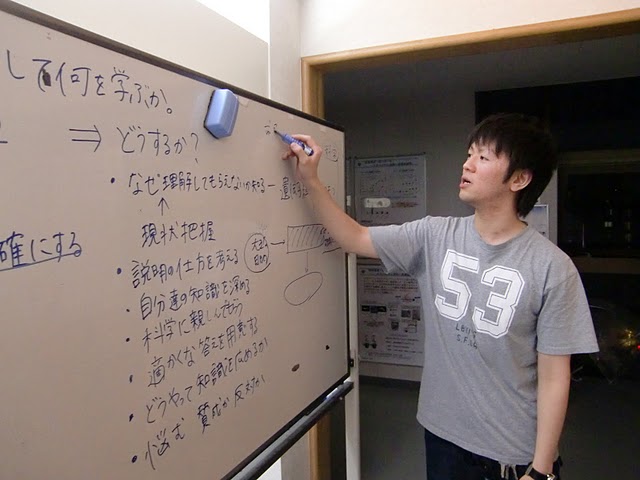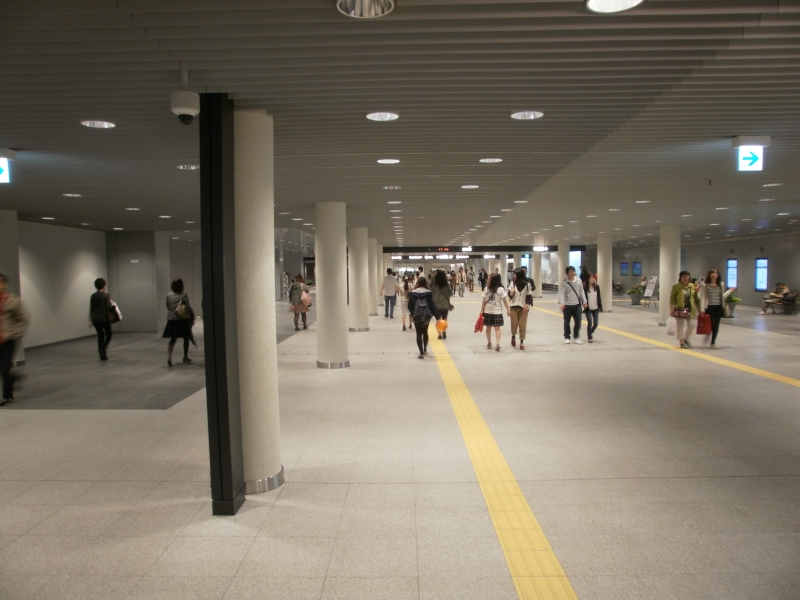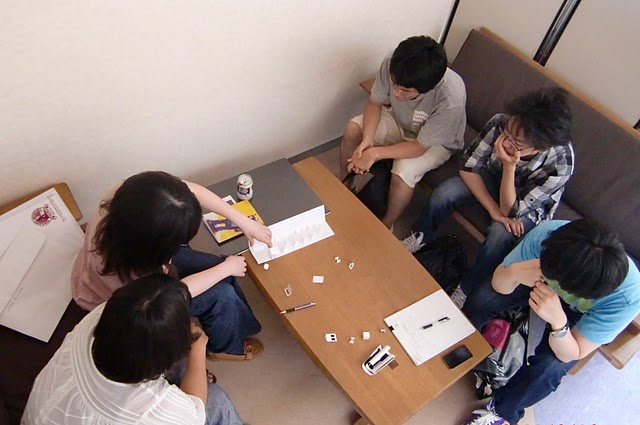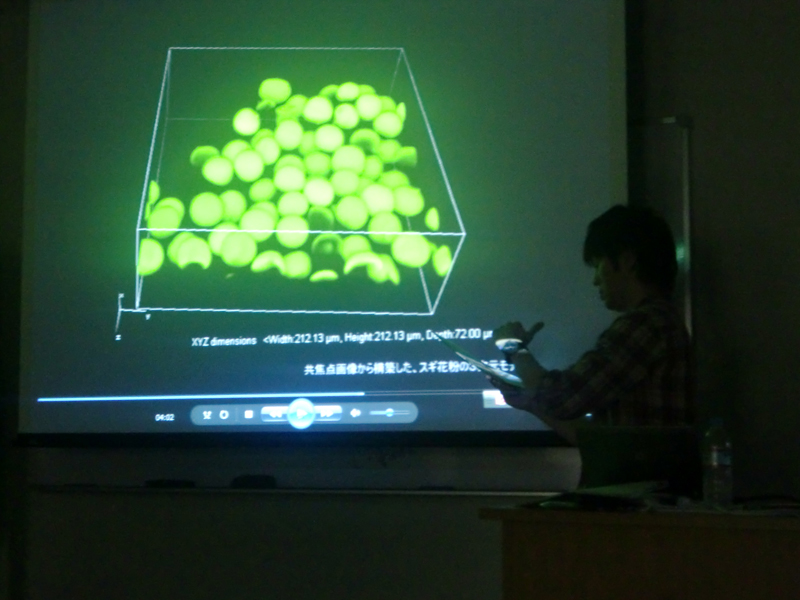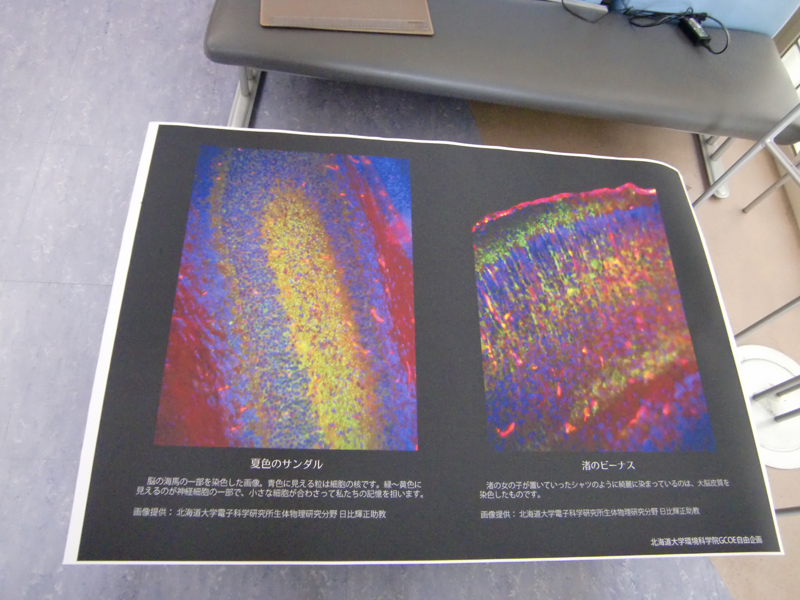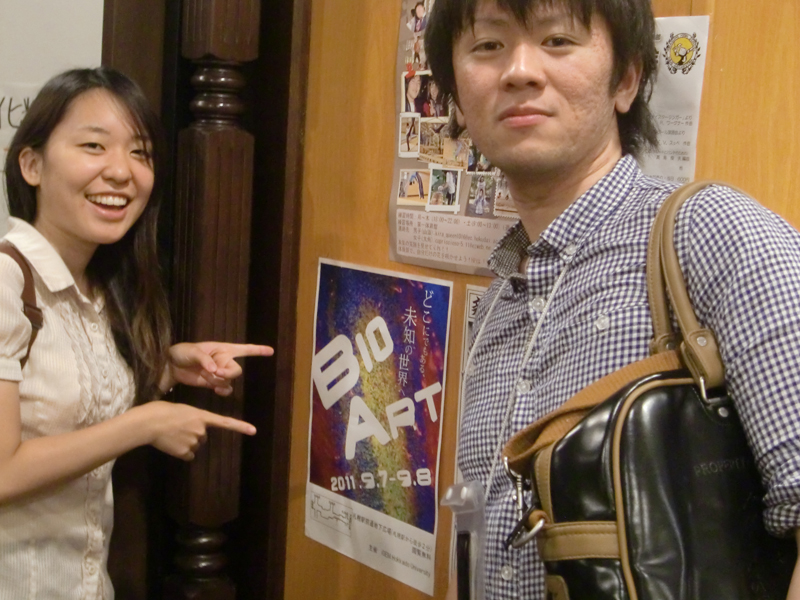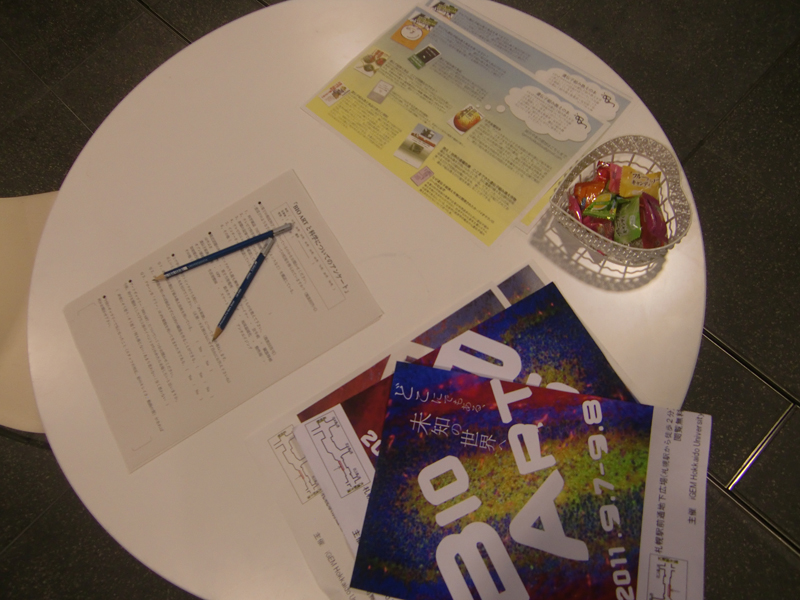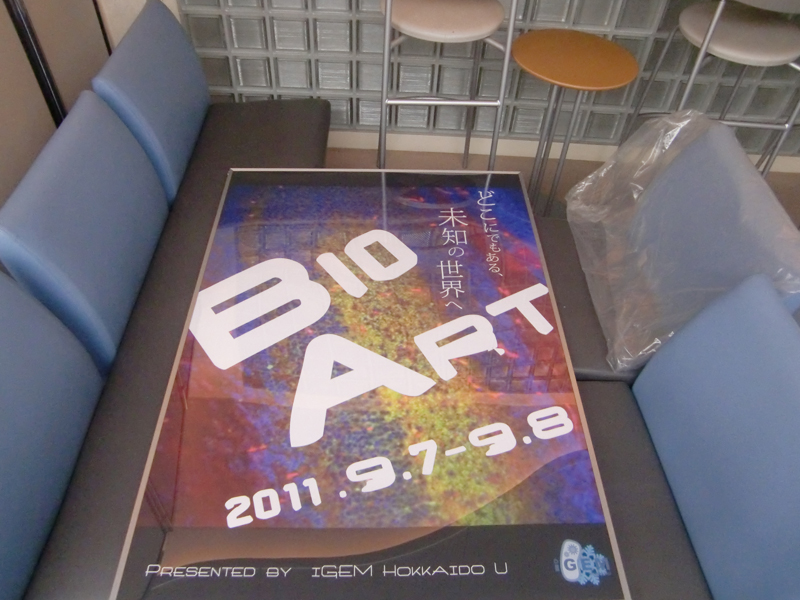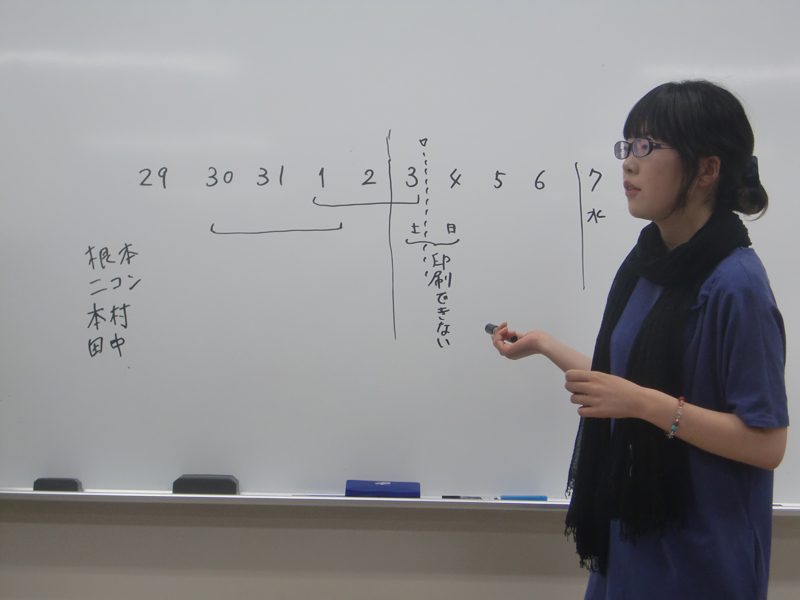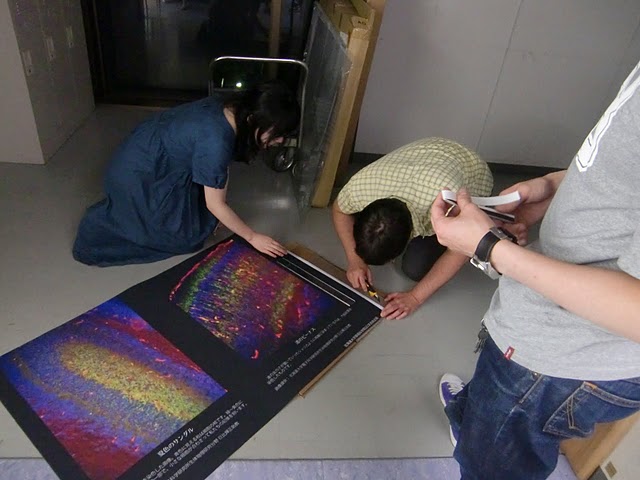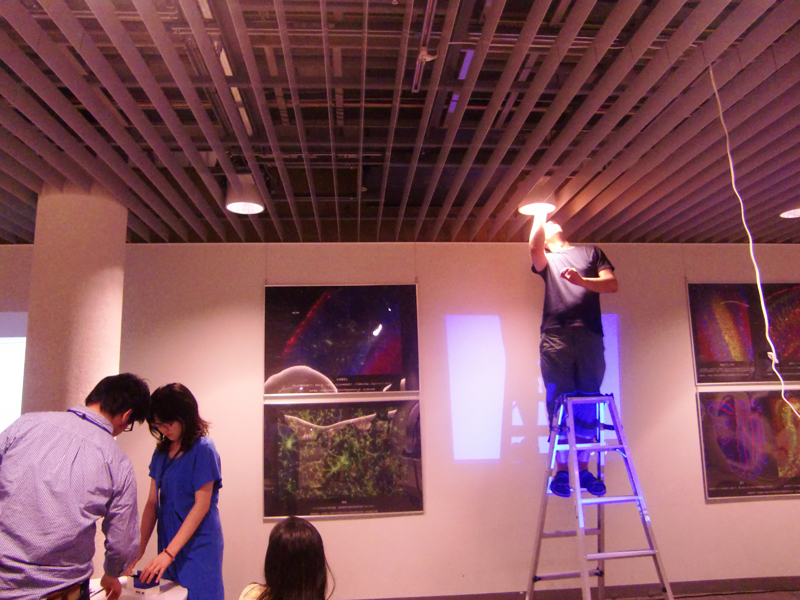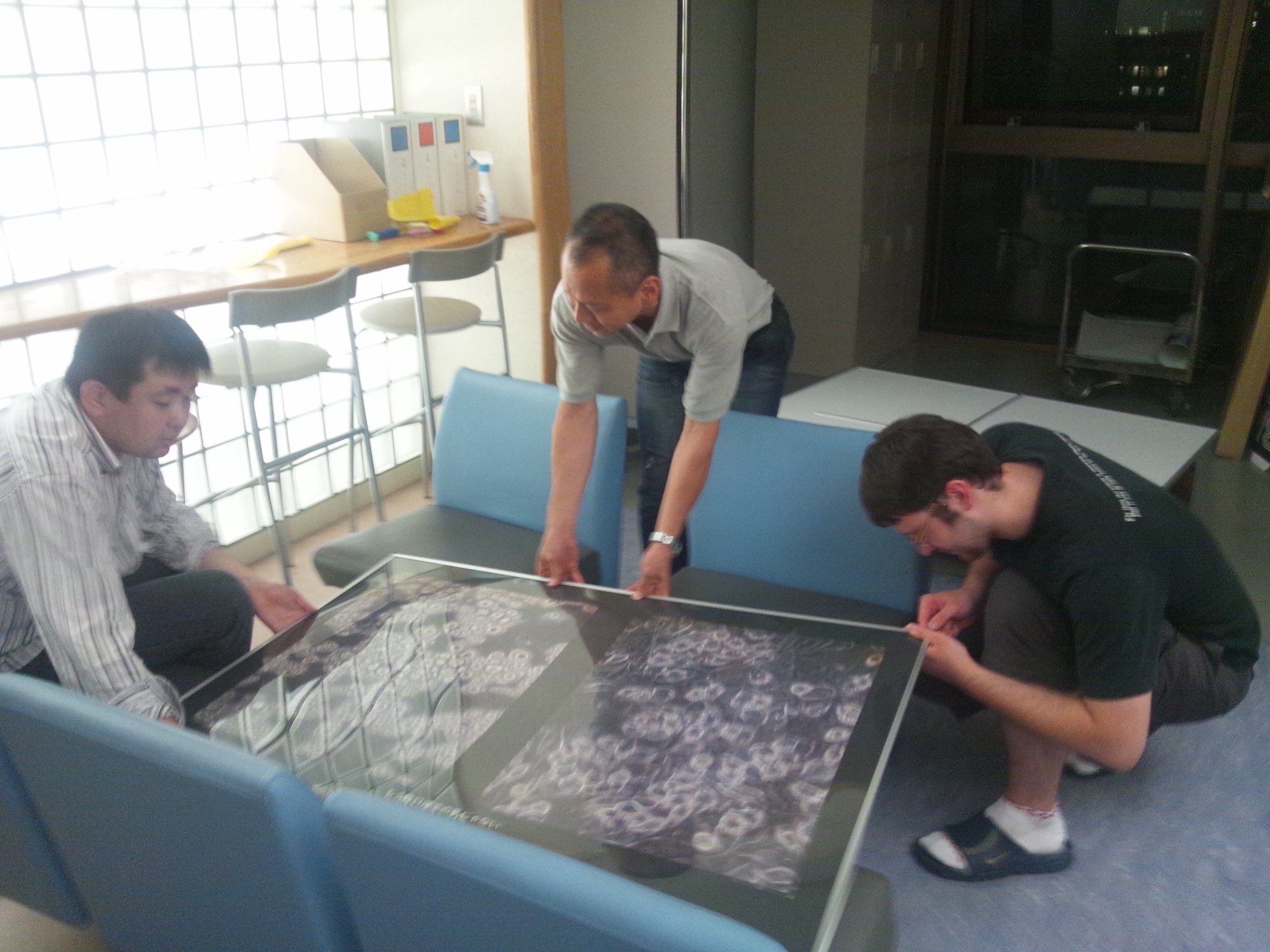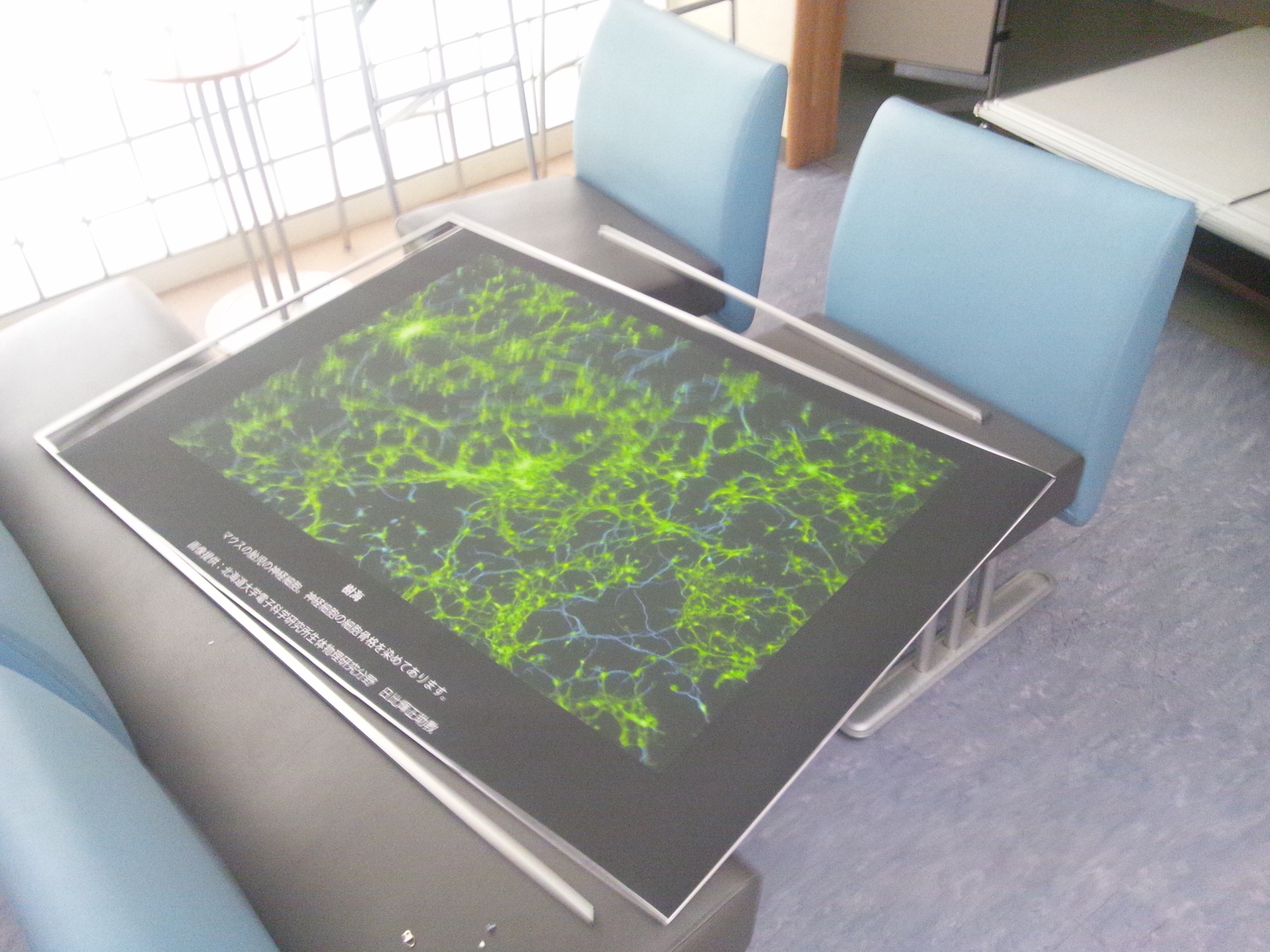Team:HokkaidoU Japan/HumanPractice/Part4
From 2011.igem.org
HokkaidoU Japan
iGEM 2011 Team of Hokkaido University
Contents |
- Top
- Virtual BioArt Gallery
- A society which citizens can think by themselves
- The way to become “citizens who can think by themselves”
- The New Communication Tool, “BIO ART”
- The road to “BIOART"
- What BIO ART was like
- Questionnaire Results
- Review
- To the Future
- Recommended books
- Collaborations
- Acknowledgements
A society which citizens can think by themselves
July
Appoint work to everyone As the management committee lists what needs to be done, we organized these tasks into different roles: Image Collector, Setup Designer, and Advertiser etc. Each of us in the group were assigned to one of them: Management Committee: arrange organize the whole event Image Collector: collect the images, which will be exhibited displayed in the “BIO ART” gallery Setup Designer: design the set up of the event Advertiser: create posters and write a press release Reservation: deciding the location where the event will be held and reserve the location.
Decide the place
Last spring in Sapporo, a huge underground walkway, connecting two of the largest central areas of the city, Sapporo Station and Odori Park, was built. The number of pedestrian that use this path can reach up to 59 thousand people a day during weekdays. Luckily we were able to reserve 18m x 4m sized space alongside the wall here.
Choose Exhibits
Have you ever been impressed with clear and beautiful pictures of cells in your textbook of molecular biology? In order to provide an opportunity for everyone to see such images besides the specialist in biology, we started to search for images beginning with photomicrographs. While looking for images, we found a few laboratories within Hokkaido University to provide images of their research.
Cooperation:
- Hokkaido University Research Institute for Electronic Science
- Dr. Tomomi Nemoto
- Dr. Terumasa Hibi
- Dr. Ryosuke Kawakami
- Dr. Takeharu Nagai
- Dr. Hiroshi Nishino
- Nikon Imaging center
- Muroran Marine Station, Field Science Center for Northern Biosphere, Hokkaido Univ.
- Dr.Taizo Motomura
- Laboratory of X-ray structural biology, Faculty of Advanced Life Science, Hokkaido Univ.
- Dr.Isao Tanaka
August
Make a demo version of exhibits We thought about a basic layout of the ground using some models of the space panel sizes and locations within the gallery of the displays roughly.
Arrange of BIOART exhibits It is necessary to narrow which images we would use to be able to exhibit effectively in a limited space. We selected the best out of all the images provided by the various laboratories. Afterwards we requested permission to include them in our “BIO ART” gallery as well as a more detailed explanation for each image.
Finalize the exhibits We added a title and an explanation to each picture and printed it out. We also made a video with the moving images provided to show during the event. In this video, we showed stereoscopic image of a cell taken by a confocal laser scanning microscope.
Make the poster We made an introduction poster to display on the wall. We explained the purpose of “BIO ART”, introducing iGEM and a definition of molecular biology.
Distribution of event advertisement posters We tried to put our posters up in different kind of places in order to appeal to people from different classes: 20 posters on the Hokkaido University campus, 20 posters in subway stations, 3 posters in supermarkets, 3 posters in restaurants and cafes, 1 poster in the library, 1 poster in the shopping mall.
September
Just before BIOART
Review books related to genetic recombination and write review In connection with molecular biology, the main theme of the gallery, getting visitors think about gene recombination is one of the targets of “BIO ART”. Therefore, we created a list of books about gene recombination on a leaflet for the visitors. We chose those books regardless of their stand for or against gene recombination, but included information such as; influences of gene combination to health, environment, economy, ethical issues, labeling regulation, etc… We provided these at the gallery.
Decide contents of questionnaire
We considered that it’s important to have a second questionnaire to check the effectiveness of the art gallery, and to get feedback of the people. With this questionnaire rather than only having questions regarding people’s interest in science and knowledge of iPS, we included questions to determine if they enjoyed the gallery. This questionnaire was given at the ”BIO ART” gallery.
Finish exhibits
Print and frame remaining images to prepare them for the gallery. After this we excitedly awaited opening day.
Hold a preliminary meeting
It’s possible we would need to explain parts of the gallery to visitors or discuss aspects they were impressed with and would want to know more about the images and how they were taken. In order to be able to provide this type of information, we deepened our knowledge on the images displayed
BIOART
Hold an evaluation meeting
A meeting to review the first day was held from 9pm at the university. We talked about how we could improve the knowledge of the staff and the layout of the gallery better for the second day.
After BIOART
Summarize the project
We totaled up the questionnaires and talked about what was a success and what could be done better next time as well as our future vision. (Staff’s comment and Summary)
 "
"
